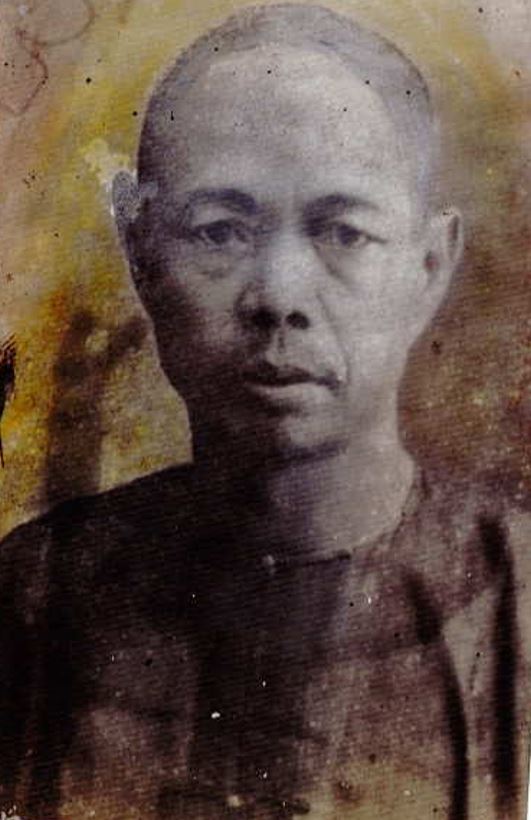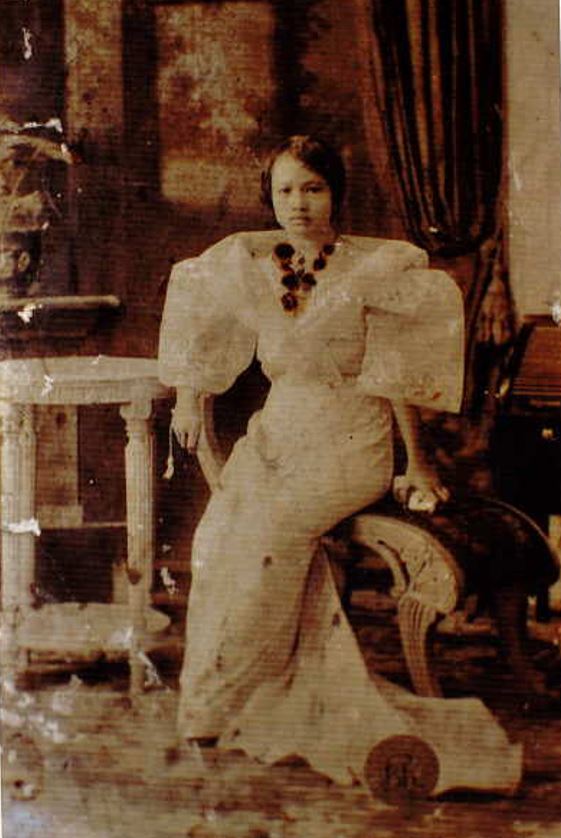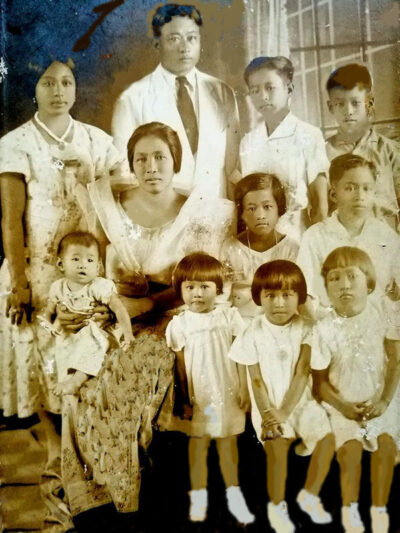Author: Marina Yap (former commissioner, ICOM)
Miss your chance of strolling in the museum, reading and feeling the story of others? You are invited to a special story today, Museum of Living Memory: The Story of a Chinese Filipino Family
This time we have Marina Yap, former Commissioner of ICOM, to share with us the living memory of her Chinese Filipino Family. Yap’s great grandfather, Crisanto Yap, came from Xiamen, China, to the Philippines seeking a better life. For passing on his cultural tradition, he donated land to cover hospitals, housed help centers and together with other few Chinese migrants in town, they founded the Chinese school in Bogo. Marina told us her family story of her immigrant ancestors and how they tried to migrate into a new country while preserving their cultural legacy.
Marina especially asked us to use her family name Yap, as she said “I prefers to honor my family heritage in bringing the family name Yap."
reviewed by Julia
My great grandfather Crisanto Yap (Lolo Santo as called by us) arrived in Bogo City, province of Cebu, Philippines, from mainland China in 1870s. It is believed that he came with his seven brothers, two of them known to our family only as Intsik Kiga and Intsik Barresto. The latter, together with Lolo Santo, settled in Bogo while a fourth brother lived in the nearby Bantayan Island. The other brothers settled in different parts of the country, but unfortunately there was no communication with each other. Lolo Santo’s family was originally from Henan but migrated to Amoy (Xiamen). When we were still young my grandfather told us that a great number of their family in China were generals of the Imperial Chinese Army.
Based on a painted portrait of my great grandfather done by one of his fellow travellers, one could see him still wearing the Changshan, a traditional Manchu style of men’s attire then imposed on all Han Chinese and worn during the Qing Dynasty. He also had a shaved forehead and the traditional long queue for the hair when he arrived in the Philippines.

As he settled in Bogo, he married Josefa Ylanan (Lola Sepa as called by us) a native Spanish mestiza. Lolo Santo had to convert to Catholicism since they were to be married according to Catholic rituals, the Philippines being then a colony of Spain. Upon conversion, he adopted the name Crisanto as his first name but kept Yap as his surname. Unfortunately no files on his full Chinese name are available since records were burned during the Second World War.
His father-in-law, Angel Ylanan served as gobernadorcillo (a municipal governor) of Bogo town from 1886-1887, and was greatly responsible for the planting and propagation of fruit trees in the area as well as the cultivation of sugarcane. In fact, the demand for muscovado sugar increased during his term.
Lolo Santo’s business, the export of copra and maguey fibers thrived and enabled him to buy land properties in the proper town in different areas in Bogo as well as 1000 hectares of farmland planted with sugar cane.
He and Josefa had five children: Eugenio (Lolo Genio), Esteban (Lolo Teban), Jacinta and Hermogina (twins) and Benedicta. My grandfather, Lolo Genio (the eldest) and Lolo Teban, his younger brother, were sent to Amoy (Xiamen) to learn Chinese languages (especially Fookien and mandarin) and Chinese culture. They stayed there for 10 years and lived with the families of my great grandfather. Separated from her two sons, my great grandmother was very sad and cried often. For her recreation and since she enjoyed gambling (like the game of hantak), Lolo Santo built a gambling den and also a big cockfighting arena in one property in the town closer to where they lived.

The house, which covers around 2,300 sq. m. was made of Spanish style, was located on a hill. Part of the hillside was flattened and the ground was levelled off and the wall of the house was constructed against the hill. The entire building, the flooring included, was made of hard woods of tindalo, narra and molave. The ground floor was used as a store and storage place for copra and maguey fibers. The first floor was four meters high from the ground floor, with at least 24 steps (broken into 6 and 18) to climb before reaching the living area with three bedrooms, the living room and the kitchen. Each bedroom covered an area of 200 square meters. The furniture was in Spanish style while the window panes were made of capiz shells. Adjacent to the living room was a door that led to a terrace overlooking a big garden full of flowers in different colors. From the kitchen area, there was a separate stairway that led down to huge covered water well on the ground floor. Someone regularly checked that the water was clean and safe for drinking. Unfortunately, this house was destroyed during the Second World War.
When my grandfather (Lolo Genio) and his brother came back to the Philippines, they both helped my great grandfather to work in the farm planted to sugar cane, fruits trees (such as lomboy, lemoncito, jackfruit), nuts (peanuts) vegetables (mongo beans) and also to take care of their business. They also took care of farm animals (chickens, horses and carabaos). The carabaos were used to turn the mills to squeeze out the molasses from the sugar cane. They rode horses to oversee the farm from early morning until late afternoon. These activities helped develop their full knowledge of Chinese traditions in farming and the use of Chinese language and writing in their export business.
Lolo Genio married a native Spanish mestiza, Gregoria Barte Lumapas from the town of Mandaue. They had twelve children, six boys and six girls. His brother, Esteban, married also a local belle, Rosalia Rodriguez. Both brothers and their families continued to live in Bogo town. Because of the family business, Lolo Genio travelled to China and the last time he visited China was sometime in 1912-1914, when the Last Emperor was still a boy.

His hobby was carpentry and administer in building his own house, which was also made of hard wood, like narra, yakal and molave according to Chinese tradition. He even used varnished hardwood (narra and yakal) to make a chair with arm rest which was placed over the squat toilet. In the bathroom, separated from the toilet room, there was a huge bathtub and a water jar with Chinese designs. To initiate us to Chinese games, he made four Chinese checker boards, two pit-carved wooden boards used for playing sungka (a parlor game which involves dropping shells or stones into large holes on the board) and a professional billiard pool placed in one room. At a young age I watched how he crafted wooden ganta (a unit to measure capacity) of different sizes using only melted hot paste to glue the joints of the perforated sides of the wood, without using nails. During the Second World War this house was burned down. But Lolo Genio rebuilt it after the war.
Lolo Genio continued to cultivate sugar cane. In between rows of sugar canes, peanuts were planted. Once matured, the peanut plants were uprooted loosening the soil. This avoided the use of carabaos. While waiting for the sugar cane harvest season, on another hectare of land he planted different fruit trees and vegetables. From the harvests, he prepared fruit and bamboo shoot preserves, which together with dried peanuts, peanut brittle, and sesame seeds brittle he supplied to Chinese shops in Cebu city. From China he brought back to Bogo some few leek green chives which he planted in his garden and he used to give some of the harvest to his close Chinese friends in the village.
Together with his brother, Esteban and other Spanish hacenderos, they pioneered the establishment of the Bogo-Medillin Sugar Milling Co. incorporated in 1928 (both were Board members) which mills centrifugal raw sugar with molasses as its by-product. It exported sugar to the U.S.
Aside from running the family business and sugar cane farm, Lolo Genio actively served the government during the last days of the Commonwealth regime in the Philippines. As a councilor of the town, he was responsible for the construction of a hospital far from the town center. He offered a small portion of his farmland overlooking the sea to provide fresh air for the patients and insisted that the hospital be built far from the population to avoid the spread of contagious diseases. Twice, during a strong typhoon, he offered his bodega (storage area) as shelter to victims especially those with children and provided food for them. After the 1949 Chinese civil war, eight Chinese arrived in our village and my grandfather helped them establish their own small business. Together with other Chinese groups in our village he helped create a Chinese school.
In 1946 Lolo Genio was appointed the municipal Vice-Mayor of Bogo. Upon the grant of independence to the Philippines in July 4, 1946, he, together with the town mayor, presided over the Philippine Independence inaugural ceremonies and raised the Philippine Flag in front of the old municipal building.
From the time of my great grandfather down to the present generation, my family kept the Chinese tradition both in the celebration of festivals and in the food we eat. The Chinese New Year was regularly celebrated, some wearing red colored clothes together with other Chinese families in the town. Each year in Cebu city and Bogo town, the Chinese celebrated the Double Ten with a parade.
For breakfast and dinner, rice porridge with fried fish or crab and black salted beans, or salted fermented red bean curd was served. Lunch was often heavy. The more popular recipes served were: chow mien, humba (with dried lily buds, dried mushrooms, gabe, 5 star anis) fermented red bean curd, fresh lumpia (strictly 3-days bean sprouts), shell soup either with misua, or razor shells or sautéed razor shells, squid with leek green chives, and chop suey and braised duck. Sometimes late in the evening he prepared tongkoi duck soup, dried herbal roots with fine noodles. Then we have native dishes like pork chicharron (deep-fried pork rind), tinola fish (a fish ginger broth).

